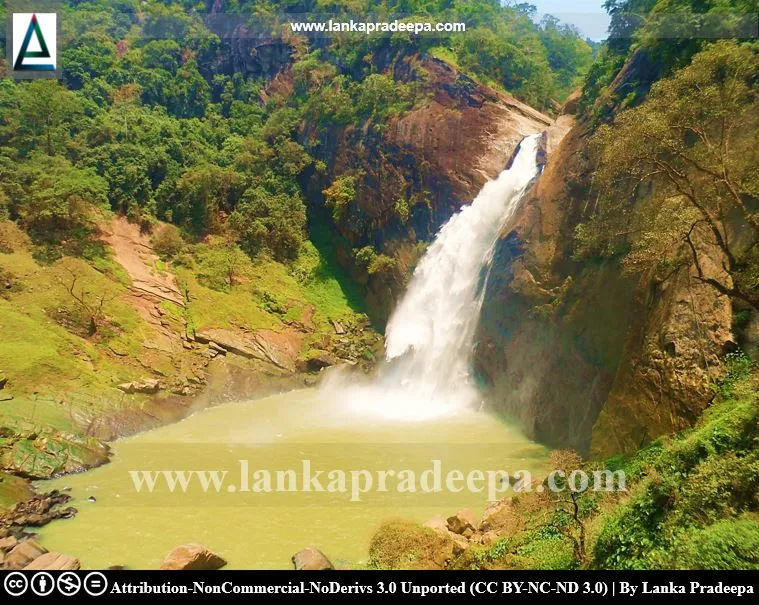
|
Dunhinda Falls |
Dunhinda Ella Falls (Sinhala: දුන්හිඳ ඇල්ල; Tamil: துன்கிந்த நீர்வீழ்ச்சி) is a waterfall situated in Badulla District, Sri Lanka. Located on Badulla-Mahiyangana road about 5 km distance from the Badulla town, the fall can be reached by walking further along a footpath stretching 1.25 km. A balcony has been built near the fall for visitors.
The fall is formed by Badulu Oya, a tributary Mahaweli Ganga River. Originated in the mountains south and west of Hettipola-Ella above the Ella Gap on the border of the Uva Highlands, the waters of the Badulu Oya plunges from a height of 63 m (206.69 ft.) into a large circular pool, generating considerable smoky dew drops spray (Briggs, 2018; Kautzsch, 1983). In the Sinhalese language, the name Dunhinda means the fall of spray or vapour fall (Briggs, 2018). The word Dun (දුන්) means that gave or was given while Hinda (හිඳ) means evaporate (Kautzsch, 1983).
Myths & Legends

Several myths and legends are found among the locals associated with the fall (Kautzsch, 1983; Wanasundera, 2002). According to one legend, a beautiful fish wearing a golden earring swims over the buried treasure of Kumarasinghe, the prince of Uva, in the pool of the waterfall and comes to the surface once a year (Wanasundera, 2002). The treasure is guarded by men armed with golden swards and the people who swim in the pool must beware of the guards, as they are looking for a human sacrifice every year.
Another story associated with the fall tells of a princess (Mampitiya Anuhas Menik Bandara) related to the royal blood of the Gampola King (14th century) who eloped from the wrath of her father with her commoner lover Kahapitiye Arachchi Bandara (Kautzsch, 1983; Wanasundera, 2002). However, the couple was finally tracked down to Kosgalla, a village near the falls. Determined not to be separated from each other, the couple fled from the village to the highest ledge of the falls and hurled themselves down into the abyss below (Kautzsch, 1983). On the same night, a fierce storm is said to have struck the surrounding area devastating men and animals and whole villages including Kosgalla (Kautzsch, 1983).
Related Posts
Read Also
References
Books
1) Borger, J. D., 1957. The waterfalls of Ceylon. Ceylon Today. Vol.6.
2) Briggs, P., 2018. Bradt Travel Guide. Sri Lanka. Bradt Travel Guides, p. 454.
3) Kautzsch, E., 1983. A guide to the waterfalls of Sri Lanka: Tisara Prakasakayo. pp.40-42.
4) Wanasundera, N. P., 2002. Sri Lanka. Cultures of the world: Marshall Cavendish, p. 9.

